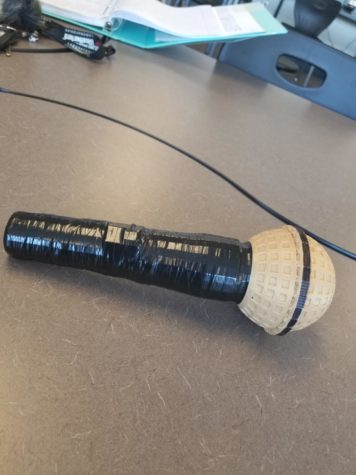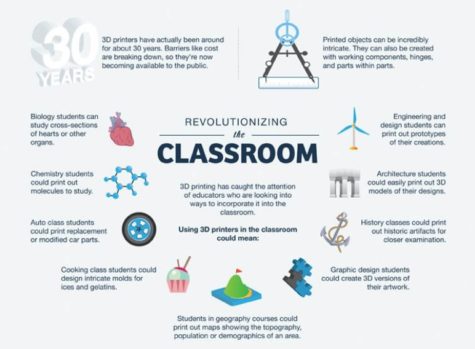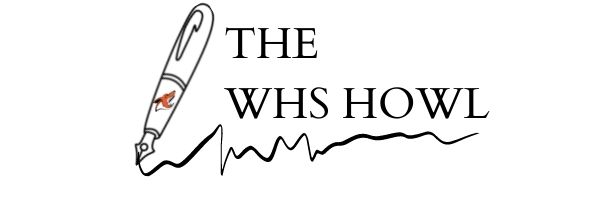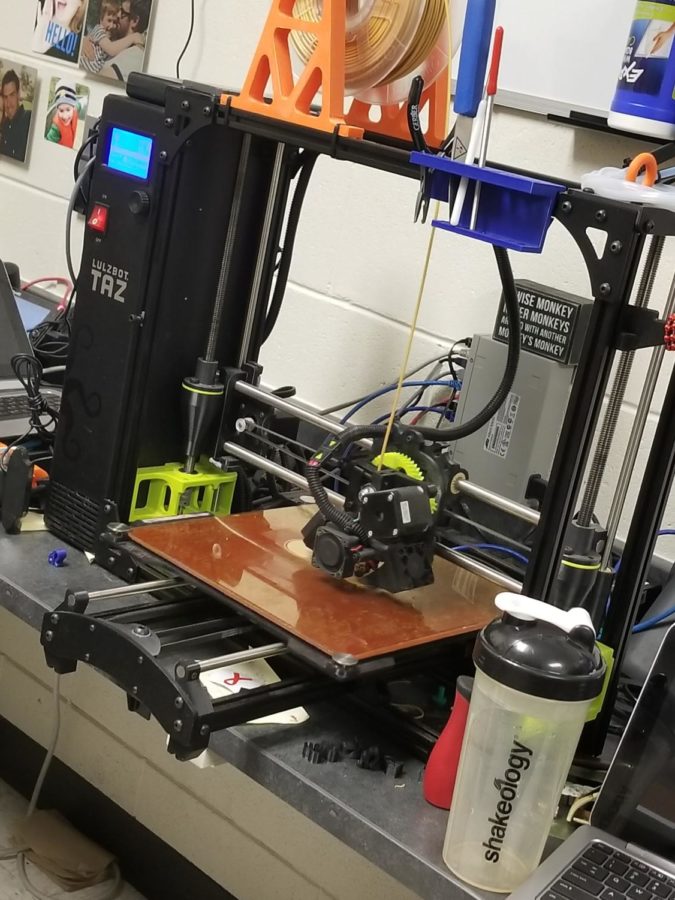3D Printer at WHS!
February 27, 2018
3D printers are a new generation of machines that can make everyday things. They’re remarkable because they can produce different kinds of objects, in different materials, all from the same machine. The guys in the tech department are very excited to have this machine.
Greg Larson, WHS Senior IT Analyst, shared some insight into what’s involved in the printing process:
You start by designing a 3D object on an ordinary home PC, connect it to a 3D printer, press ‘print’ and then sit back and watch. The process is a bit like making a loaf of sliced bread but in reverse. Imagine baking each individual slice of bread and then gluing them together into a whole loaf. That’s basically what a 3D printer does.
The 3D printing process turns a whole object into thousands of tiny little slices, then makes it from the bottom-up, slice by slice. Those tiny layers stick together to form a solid object. Each layer can be very complex, meaning 3D printers can create moving parts like hinges and wheels as part of the same object. You could print a whole bike – handlebars, saddle, frame, wheels, brakes, pedals, and chain – ready assembled, without using any tools. It’s just a question of leaving gaps in the right places.
For our Journalism project, we chose to make a microphone. It took approximately seven hours to complete.

How Are 3D Printers Used in Schools?
History classes can print out historical artifacts for examination.
Graphic Design students can print out 3D versions of their artwork.
Geography students can print out topography, demographics, or population maps.
Cooking students can create molds for food products.
Automotive students can print out replacement parts or modified examples of existing parts for testing.
Chemistry students can print out 3D models of molecules.
Biology students can print out cells, viruses, organs, and other critical biological artifacts.
Math students can print out “problems” to solve in their own learning spaces, from scale models to city infrastructural design challenges.

References
“10 Ways 3D Printing Can Be Used In Education” [Infographic]. (2015, November 27). Retrieved February 27, 2018, from https://www.teachthought.com/technology/10-ways-3d-printing-can-be-used-in-education/

